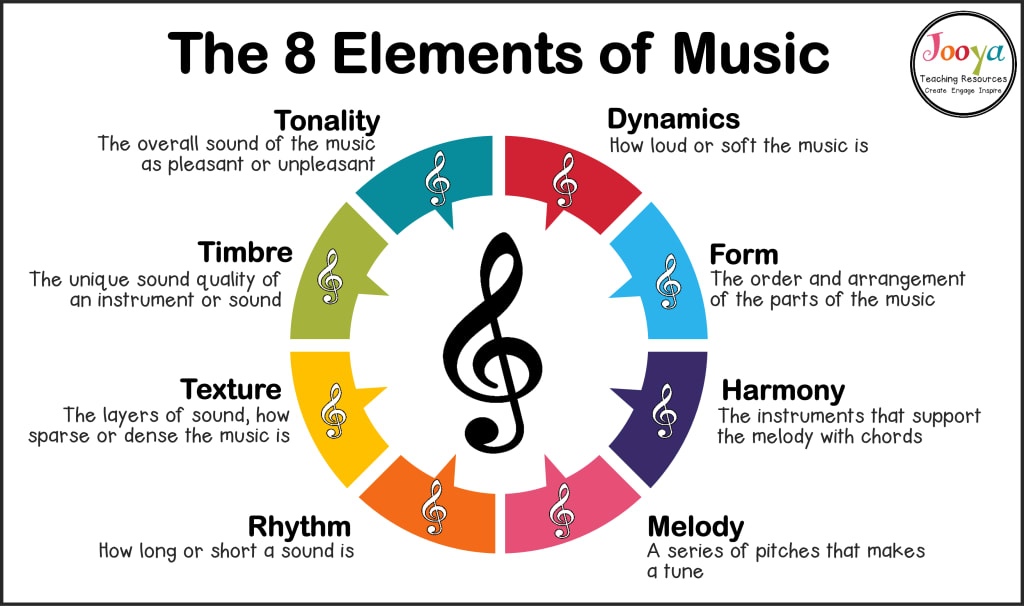Music Theory 101: Build a Solid Foundation
Component of musical education

Music theory is often perceived as a daunting subject, but it’s a crucial component of musical education that can enhance your understanding and enjoyment of music. Whether you're an aspiring musician or a seasoned player, a solid grasp of music theory can unlock new levels of creativity and technical proficiency. With more time at home, now is the perfect opportunity to dive into the fundamentals of music theory. This guide will cover the basics, from notes and scales to chords and harmonization, providing you with a comprehensive foundation to build upon.
Basics of Music Theory:
Music theory begins with understanding the basic building blocks of music: notes, scales, and chords.
Notes: The smallest unit of music. There are 12 unique notes in Western music, including the natural notes (A, B, C, D, E, F, G) and the sharps/flats (A#/Bb, C#/Db, D#/Eb, F#/Gb, G#/Ab). Learning the notes and their positions on your instrument is the first step.
Scales: A sequence of notes in a specific order. The most common scale is the major scale, which follows the pattern: whole, whole, half, whole, whole, whole, half. Minor scales, pentatonic scales, and blues scales are also essential for different genres and styles.
Chords: When two or more notes are played simultaneously, they form a chord. Chords are built from scales and provide the harmonic foundation of a piece. The major and minor triads are the most basic chords, consisting of three notes each.
Reading Sheet Music:
Understanding musical notation is a fundamental aspect of music theory.
Staff and Clefs: Music is written on a staff, which consists of five lines and four spaces. The treble clef and bass clef are the most commonly used clefs, indicating the pitch range.
Notes and Rests: Notes represent the pitch and duration of a sound, while rests indicate silence. Each type of note and rest (whole, half, quarter, eighth, sixteenth) has a specific duration.
Key Signatures: Key signatures indicate the key of the piece by showing which notes are consistently sharp or flat. They are found at the beginning of a piece of music, right after the clef.
Time Signatures: Time signatures indicate the rhythm of the piece, showing how many beats are in each measure and what note value receives one beat. Common time signatures include 4/4, 3/4, and 6/8.
Rhythm and Timing:
Rhythm and timing are crucial components of music theory that deal with the duration and placement of notes.
Beats and Measures: Music is divided into measures, each containing a set number of beats. The beats are the steady pulse you feel in the music, and measures help organize these beats.
Tempo: The speed at which a piece of music is played, typically measured in beats per minute (BPM). A metronome can be a helpful tool for practicing at different tempos.
Note Values: Understanding different note values (whole, half, quarter, eighth, sixteenth) and how they fit into the beats of a measure is essential for reading and performing music accurately.
Syncopation: A rhythmic technique that involves placing emphasis on weak or off-beats, creating a more complex and interesting rhythmic pattern.
Harmonization:
Harmonization involves combining different notes and chords to create a pleasing sound.
Chord Progressions: A sequence of chords that provides the harmonic foundation of a piece. Common chord progressions, like the I-IV-V-I progression, are used in many genres.
Intervals: The distance between two notes. Intervals are classified as major, minor, perfect, augmented, or diminished, and they form the building blocks of chords and melodies.
Voice Leading: The smooth movement of individual notes or "voices" within a chord progression. Good voice leading ensures that each voice moves in a logical and pleasing manner, making the progression sound cohesive.
Diatonic Harmony: The use of chords that are derived from the notes of a particular scale. Diatonic harmony is common in Western music and helps create a sense of tonal coherence.
Practical Applications:
Applying music theory to your practice can significantly enhance your musical skills and creativity.
Improvisation: Understanding scales and chord progressions allows you to improvise more effectively. Knowing which notes and chords fit within a certain key can help you create interesting and harmonious improvisations.
Composition: Music theory provides the tools to compose your own music. By understanding how different chords and scales work together, you can write pieces that are both structurally sound and emotionally expressive.
Arrangement: When arranging music for different instruments, music theory helps ensure that each part fits together harmoniously. Knowledge of voice leading, chord voicings, and orchestration is crucial for creating effective arrangements.
Performance: A solid understanding of music theory can enhance your performance skills. Knowing the theory behind the music you’re playing allows you to interpret it more accurately and add your own personal touch.
- Music theory is a vast and fascinating subject that can greatly enhance your understanding and enjoyment of music. By mastering the basics of notes, scales, chords, rhythm, and harmony, you can build a solid foundation that will serve you in all your musical endeavors. Whether you're reading sheet music, improvising a solo, composing a new piece, or simply playing for fun, a strong grasp of music theory will make you a more confident and versatile musician. So take advantage of your time at home to dive into the world of music theory, and watch your musical abilities flourish.
We’d love to hear about your experiences with learning music theory! What aspects have you found most challenging or rewarding? Share your thoughts and any resources you’ve found helpful in the comments below. Let’s support each other in our musical journeys!
About the Creator
Music Industry Updates
Welcome to Music Industry Updates, your go-to hub for the latest happenings in the music world.
Stay tuned, stay informed, and stay inspired with Music Pulse – where every beat counts.
Enjoyed the story? Support the Creator.
Subscribe for free to receive all their stories in your feed. You could also pledge your support or give them a one-off tip, letting them know you appreciate their work.






Comments
There are no comments for this story
Be the first to respond and start the conversation.